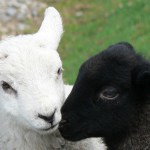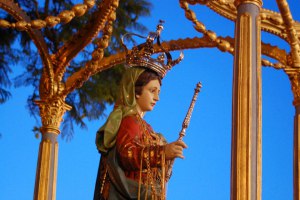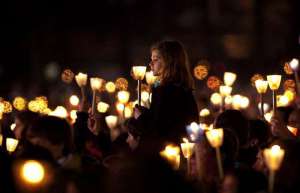 The first lambs of the year are in the fields and the Mimosa is in flower…. time to celebrate the first signs of spring!! The old Celtic name for this time of the year is called Imbolc and it is traditionally celebrated on 2nd February.
The first lambs of the year are in the fields and the Mimosa is in flower…. time to celebrate the first signs of spring!! The old Celtic name for this time of the year is called Imbolc and it is traditionally celebrated on 2nd February.
It is time to celebrate the passing of winter and the beginning of the agricultural year. We have been busy on our Quinta clearing the land of brambles and broom, and preparing the earth to plant our seeds.
In Celtic traditions it is also a day of celebrating the Celtic Goddess Brigid. Brigid is the Goddess of Poetry, Healing, Smithcraft, and Midwifery. If you can make it with your hands, Brigid rules it. She is a triple Goddess, so we honour her in all her aspects. This is a time for communing with her, and tending the lighting of her sacred flame. At this time of year, we will light multiple candles, white for Brigid, for the god usually yellow or red, to remind us of the passing of winter and the entrance into spring, the time of the Sun.
Imbolc is typically celebrated when the ice is melting and the ground is turning muddy and soft. The water from the heavy rains are cleansing and preparing the earth to become fertile once again. In the hidden depth of the earth dormant seeds are beginning to germinate and life is stirring. The Sun is gathering strength, the days are getting longer and light and warmth are beginning to return. The earth is quickening and the buds are beginning to swell.
This is a time of purification after the winter, through the renewing power of the Sun. It is also a festival of light and of fertility, once marked in Europe with huge blazes, torches and fire in every form. Fire here represents our own illumination and inspiration as much as light and warmth. Imbolc is also known as Feast of Torches, Oimelc, Lupercalia, Feast of Pan, Snowdrop Festival, Feast of the Waxing Light, Brighid’s Day, and probably by many other names.
It is traditional upon Imbolc, at sunset, to light every lamp in the house – if only for a few moments. Or, light candles in each room in honour of the Sun’s rebirth.
Foods appropriate to eat on this day include those from the dairy, since Imbolc marks the festival of calving and lambing. Sour cream dishes, and spicy and full-bodied foods in honour of the Sun. Curries and all dishes made with peppers, onions, leeks, shallots, garlic or chives are appropriate. Spiced wines and dishes containing raisins – all foods symbolic of the Sun – are also traditional.
Imbolc is a time of fasting and cleansing. The larder is getting sparser. It is time to clean out, and get rid of old stuff in preparation of next season’s growth.
Imbolc – February 2nd
Pronounced: EE-Molc
Incense: Rosemary, Frankincense, Myrrh, Cinnamon
Decorations: Brigid’s cross, Corn Dolly, Besom, Spring Flowers
Colours: White, Orange, Red
IMBOLC IN PORTUGAL: FESTA DA LUZ
In Portugal, Nossa Senhora da Luz (Our Lady of Light ) is the patron of 70 villages. Nossa Senhora da Luz is also known as Nossa Senhora das Candeias or Nossa Senhora da Purificação (Our Lady of Candles or Our Lady of Purification).

Vale do Peso, a few kilometers from Crato, Alentejo, is one of the small villages where people celebrate the feast of Our Lady of Light on the second day of February.
Among other traditions, this celebration involves a novena (nine days of prayer), a special decoration of the church and a procession.

Vilar – S. George, near Arcos de Valdevez, in the Minho, is another of the towns that celebrate the Lady of Light with a candlelight procession.
In the early spread of Christianity, the people maintained the pagan tradition of lighting candles, so the priests began to carry the processions to the church interiors, creating the candlelight processions.






Lovely post! Imbolc blessings to you <3